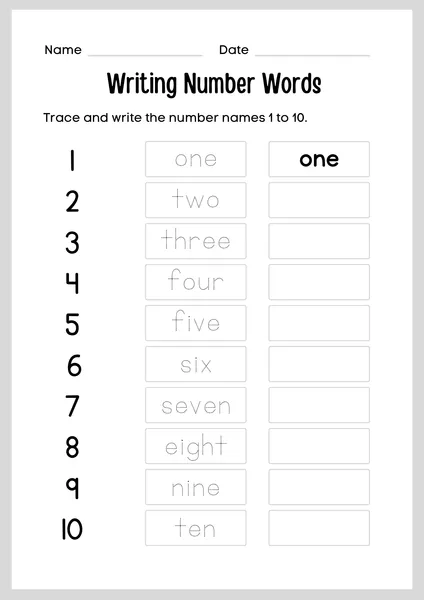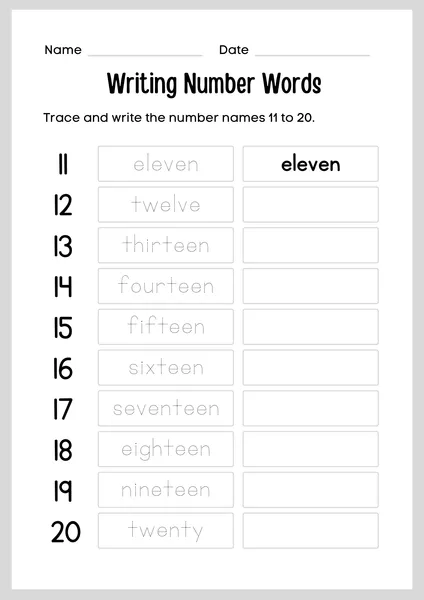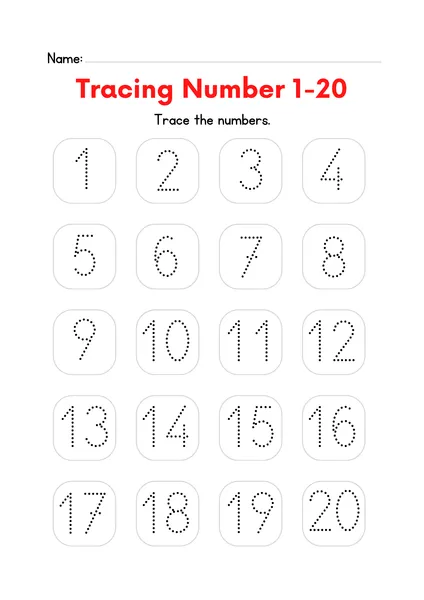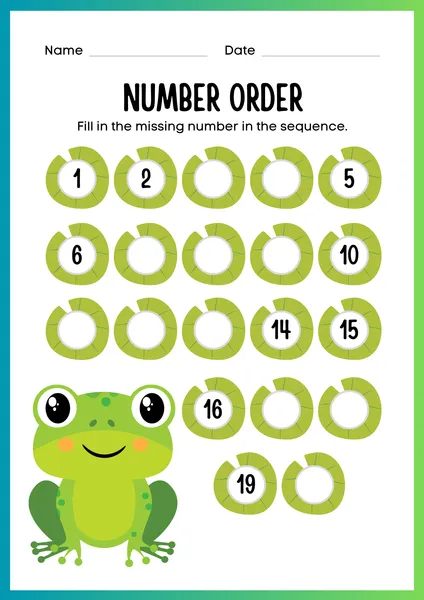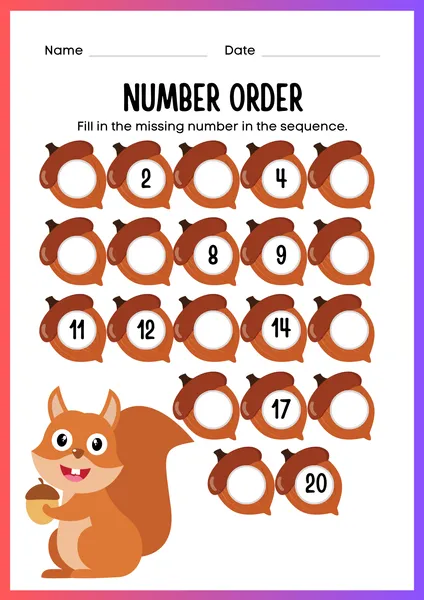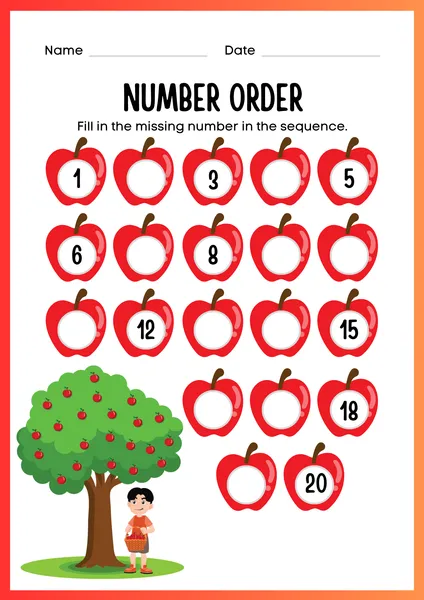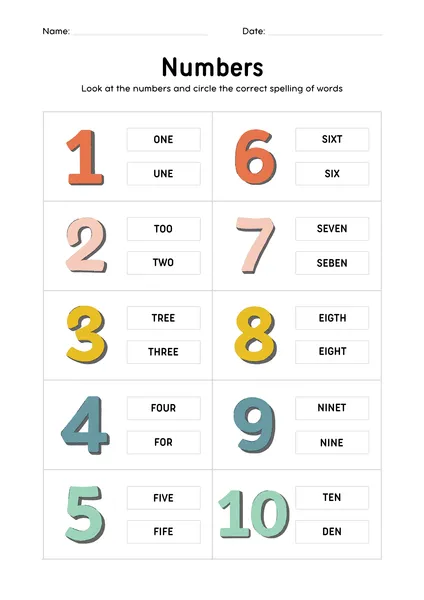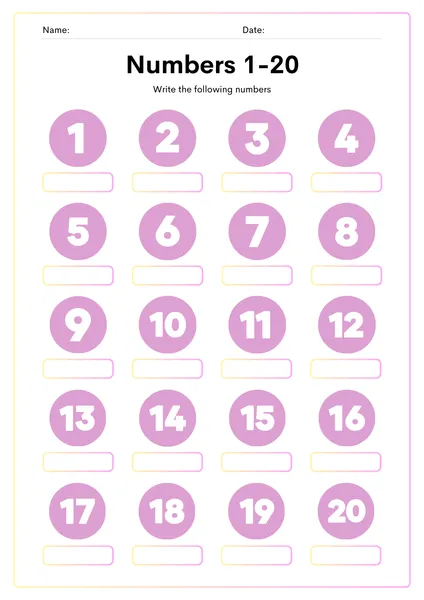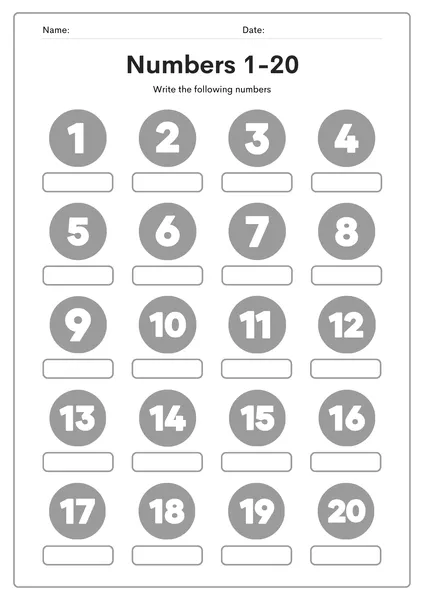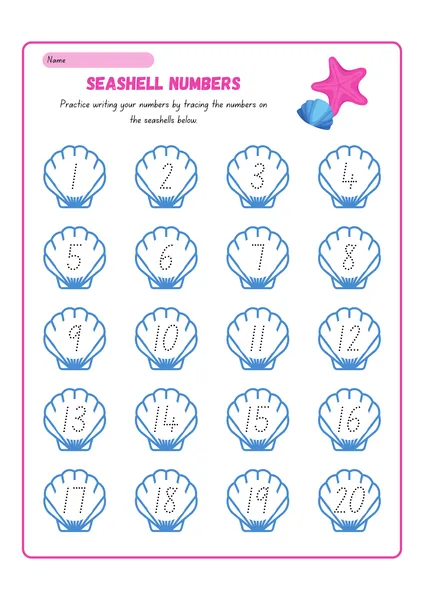Are you looking for a fun and effective way to support your little one in learning a number sequence? Look no further! Free printable number worksheets 1-20 for kindergarten are fantastic for building a strong math foundation. We are kindergarten teachers, so we know that whenever we can make learning fun, we’re on to something. These worksheets are an excellent way to practice a significant number of hands-on activities.
This article will discuss how important it is to understand number sequence. We will cover ordering numbers, fill in the missing numbers, and use a number line. Plus, we’ll provide links to awesome free printable number worksheets 1-20 to get you started!
Why is Number Sequence so important?
- Counting with Confidence: Here, counting, both forwards and backwards, is based on number sequence. That way, children learn to understand, quantify, and compare things and how numbers relate to real life. Think about counting toys, sharing snacks, or how many more swings they get on the playground — it’s all built on number sequence.
- Unlocking Number Relationships: Seeing the relationships between numbers helps children recognise number sequences. What they can start getting their head around is ‘more than’, ‘less than’, and ‘equal to’. We are setting ourselves up to compare numbers, ordering them from least to most significant and working with addition and subtraction one day!
- Problem-Solving Power: Problem-solving uses number sequence. Whether calculating the number of leftover cookies after sharing with friends, where they stand in line for recess or what order comes after the other in a storey, a good sense of what number comes next allows children to tackle challenges strategically.
- The Gateway to Place Value: Place value, the understanding that the position of a number in a number sequence gives that digit a different value (for example, the units place, 10s place, 100s place and so on), is built on number sequence. This is foundational and essential for further math concepts like multi-digit addition and subtraction beyond this point.
- Pattern Recognition: Introducing children to the patterns in the world is number sequences. This skill goes beyond mathematics – pattern recognition and extension are critical in critical thinking, logical reasoning and artistic expression.
Engaging Activities to Make Learning Fun
Here are some hands-on, playful activities to help your little ones master number sequence:
1. Ordering Numbers
- Number Cards: To play, use a set of number cards between the numbers 1 to 20. Have your child shuffle these and return them in the correct order. While you usually play with paper or cards, you can use cards with different fonts, colours, or even pictures for the numbers to add on an extra challenge.
- Objects: Collect 20 small items like blocks, toys or buttons. Get your child to line them up in a line, counting them as they do. This can also be a sorting activity as you can use different coloured or shaped objects having them create patterns.
- Puzzles: Do simple puzzles that require children to assemble several pieces in the correct sequence. You can buy these puzzles or make your own with cardboard or craft foam.
- “What Comes Next?” Game: Have your child add aloud to an existing number sequence (e.g., ”3 4 5… ”). If students find that too easy, increase the difficulty, using more significant numbers or skip counting (e.g. “10, 12, 14 …”).
2. Filling in Missing Numbers
- Number Lines: Fill in the missing numbers of a number line. Ask your child to fill in these blanks. You can define your numbers by creating your number line or finding an online printable version.
- Worksheets: Give number sequences with missing numbers provided on worksheets. Writing in the correct numbers is easy for children. Seek worksheets with interesting themes or pictures to keep them motivated!
- Hidden Number Games: Place number cards around the room and have your child find them, then organise them from one to ten. Additionally, you can challenge yourself to write numbers on strips of paper to be put in a rice or beans sensory bin.
- “Mystery Number” Riddles: Clue a missing number in a sequence. For example, “I am an old number between 11 and 15.” What am I?”
3. Using a Number Line
- Counting Adventures: Count forwards and backwards using a number line. Get your child to jump, hop or slide along the number line while counting.
- Skip Counting Fun: Use a number line to introduce counting (counting by 2s, 5s, 10s).
- Addition and Subtraction Stories: simple addition and subtraction problems on the number line. For example, what if we start at five and jump three spaces ahead? Where do we end up?
4. Number Sequencing Songs and Rhymes
- Ten Little Monkeys Jumping on the Bed: kids will count backwards from ten in a fun.
- Five Little Ducks Went Out One Day: It can help children count and sequence numbers.
- This Old Man: Number sequence and counting can be introduced with this song using the appropriate actions for each number.
- Create Your Own: We suggest making up songs or rhymes about similar numbers, counting or sequences of numbers. Ask your child to embellish it with instruments or move to their favourite music.
5. Hands-on Activities
- Building Towers: Children should build towers with blocks, counting each block as they add it. They can also attempt to create towers of certain heights and pattern the blocks of varying colours.
- Sorting Objects: Give a collection of objects like buttons, beads, and toys, and have kids sort them by colour or size, then count each kind. This activity combines classification and fine motor skills with a number sequence.
- Counting Games: Include games like hopscotch or hide and seek, and count as you play the game. Also, you can use dice or spinners to produce numbers and to have the kids count out that many of something or take that many steps.
Free Printable Number Worksheets 1-20
Below, you can find free printable number worksheets for the numbers 1-20:
Free-Printable-Number-Worksheets-1-20-for-Kindergarten
How to Work with Worksheets Effectively
- Start with the Basics: Start with worksheets that only teach ordering numbers from 1 to 10. Increase the difficulty gradually as your child progresses. You can also separate by offering choices – let your child choose the worksheet she is most interested in.
- Make it Fun: Make the worksheets enjoyable and use stickers, crayons or markers. Let the child decorate or use the worksheets for a larger art project.
- Provide Support: If your child is struggling with something, help them learn to overcome it. If it needs to be broken down into smaller tasks, do so. But also write a specific goal for each of these smaller tasks. You can also work through the worksheet together as you model the activity and give prompts.
- Mix it Up: Don’t just assume worksheets. Then, they can be combined with other activities to keep learning varied and interesting.
- Celebrate Success: Reinforcing students’ positive behaviours builds confidence that motivates students to keep learning even more.
Beyond Worksheets: Extending Learning in Everyday Life
Using worksheets is good; learning number sequence is an interactive and multi-sensory activity. Here are some ideas to extend learning beyond the paper:
- Everyday Activities: Introduce number sequence into your day-to-day activities. Count the stairs you climb, the apples in your fruit bowl, and the cars going by. Play a game with yourself and try to find numbers in your environment: street signs, licence plates and clocks will do.
- Story Time: This exercise should be done by reading books involving counting and number sequences.
- Cooking and Baking: It is a real improvement in number sequence application and helps to build practical math skills.
- Outdoor Play: Use a sidewalk as a place to draw a number line with chalk or make a number hunt in the backyard. Have your child hide number cards or objects, find them, and put them in order.
Remember: Be patient, you support them, and learning is fun. If you can practise this consistently and encourage your child, he will have a strong foundation in number sequence, which will get him off to a great start in math and beyond.
